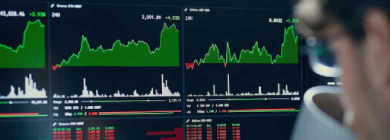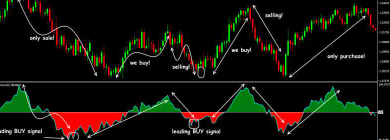“Growth was impacted in the quarter due to significant external challenges,” Tata Motors Group Chief Financial Officer PB Balaji said in its earnings release.
The decline in passenger vehicle revenue was due to slower consumer demand and seasonal factors, the company said in an earnings release. It said Jaguar Land Rover’s revenue was impacted by temporary aluminum supply constraints. Slowdown in implementation of infrastructure projects, decline in mining activity and overall decline in fleet utilization due to heavy rains affected sales of commercial vehicles, it said.
Last quarter, the company said it had an all-time high channel inventory with further buildup.
But Balaji said in an earnings call on Friday that inventory had returned to normal by the end of October. “As far as production is concerned, we will cater to whatever the demand is in the market. We are not stressed on that front. “We know October is going to be a strong month, but we have to make sure we don’t drag demand forward from November,” he said.
The company said in its earnings release that the festive season and significant investment in infrastructure will strengthen the business. Balaji said the second half of the year is expected to perform better as supply challenges ease and demand picks up.
In the second quarter, the company’s consolidated net profit fell 10% year-on-year to Rs. 3,450 crore, while consolidated income from operations fell 3.5 percent to Rs. 1,01,450 crores.
Shares of the company closed down 1.72% at Rs 805.70 on the BSE on Friday, while the benchmark Sensex fell 0.07%.
Tata Passenger Vehicle (Tata PV)
Tata Passenger Vehicle (Tata PV) revenue fell 3.9% year-on-year to Rs. 11,700 crores. PV volumes fell 6.1% to 1,30,500 units due to sluggish consumer demand and seasonal factors.
“The passenger vehicle industry saw a nearly 5% decline in registrations in Q2, resulting in a continued build-up of channel inventory. The lapse of some subsidies also affected EV sales. We controlled our offtakes in Q2 to keep our channel inventory under control. Q3 started with a revival in industry demand on the back of a strong festive season. Tata Motors recorded its highest ever monthly registrations of around 68.5k during October, which helped bring inventory back to normal levels,” said Shailesh Chandra, Managing Director, Tata Motors Passenger Vehicles and Tata Passenger Electric Mobility.
Tata PV is typically 35-40% in rural areas and the rest is urban, Balaji said at a media briefing, describing himself as more urban-centric. “As far as the quarter is concerned, the overall demand has been very weak based on multiple factors. I think it’s fair to say that unsustainable levels of inventory have been built up by the industry, which is improving significantly during the festive season. And so, I would expect a decent second half here. But the overall year-on-year growth is in the mid-single digits.”
He added that the company had forecast a weak first half due to the election and heavy monsoon. “We called in May that it would be more of a back-end recovery and that’s exactly how it’s going.”
Jaguar Land Rover (JLR)
Jaguar Land Rover’s (JLR) revenue has been hit by temporary aluminum supply constraints, the company said. Around 6,029 vehicles were also put on hold for additional quality checks. Revenue for the quarter fell 5.6% year-on-year to £6.5 billion. However, full-year guidance for revenue was unchanged at £30 billion.
The year-over-year drop in profitability reflects lower wholesale sales and increased marketing costs and selling expenses, partially offset by Range Rover’s product priority and material cost improvements, the company said. Profit before tax was £398 million, down from £442 million a year earlier.
“We have invested £250 million so far to prepare our Halewood UK plant for electric vehicle production and with strong global demand for our products, we are well positioned to meet our commitments again this financial year,” said Adrian Mardale, JLR Chief Executive. , said.
Balaji said, “On the JLR side, from a demand perspective, the market we will be watching like a hawk is China, where we are seeing tension in the market… We are in a good place relative to the market, but it is not. It means that we are growing to the extent that we should be growing in the market.”
“The challenge in China is credit availability for those who are there. There has also been a reduction in the number of dealer outlets,” Balaji said, adding that a major concern in China is the availability of dealer finance.
Tata Commercial Vehicle (Tata CV)
Tata Commercial Vehicle (Tata CV) revenue fell 13.9% to Rs. 17,300 crores. Domestic wholesale CV volume declined 19.6% year-on-year to 79,800 units. The company said a slowdown in the implementation of infrastructure projects, reduced mining activity and an overall decline in fleet utilization due to heavy rains impacted revenue. Exports declined by 11.1% year-on-year to 4,400 units.
Girish Wagh, executive director, Tata Motors, said, “Going forward, with the easing of rains, an increase in infrastructure spending and the arrival of the festive season, consumption will increase, we Expect demand to pick up.”
(You can now subscribe to our ETMarkets WhatsApp channel)
































